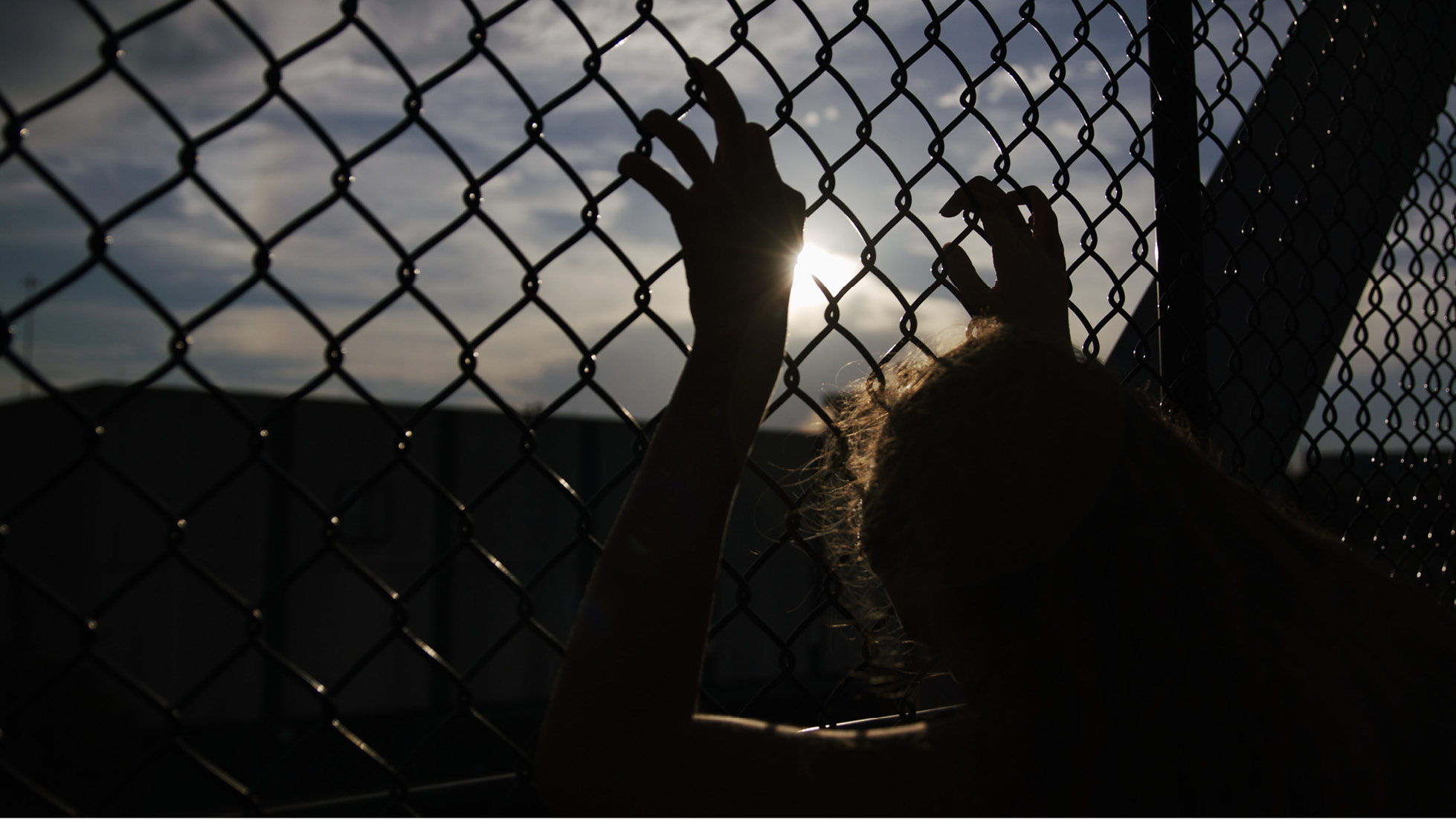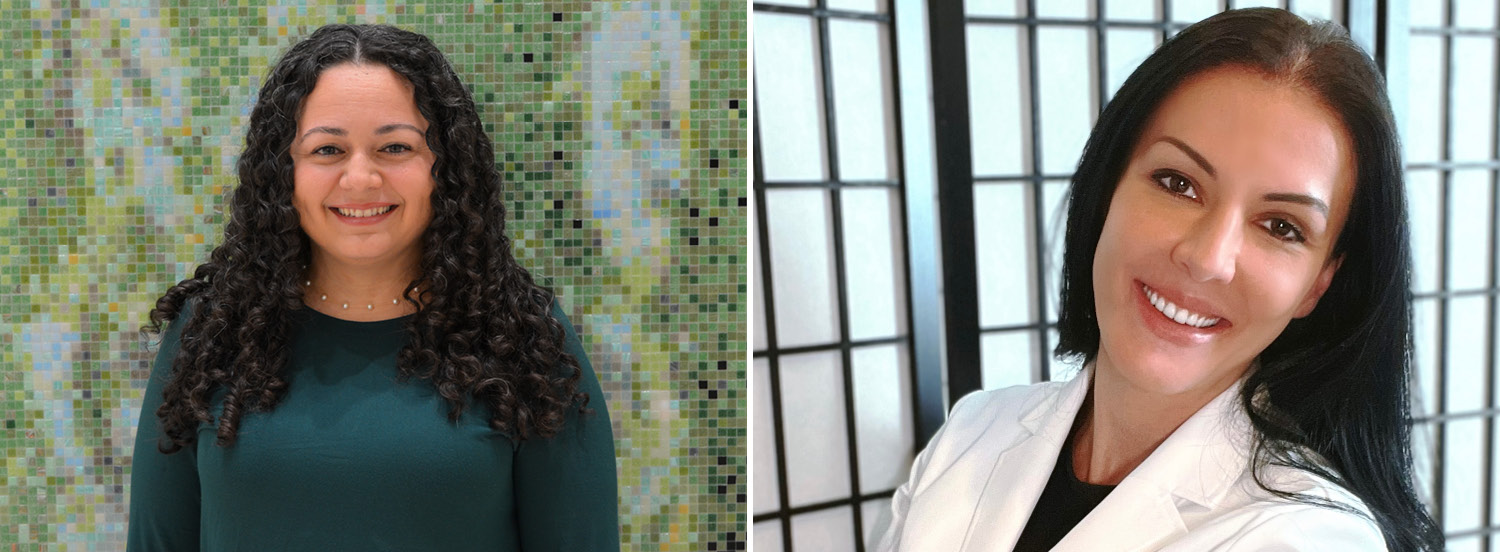Identifying Human Trafficking
Robin Shear, 06-13-2023

Working as an emergency department nurse early in her 20-year career, Aileen Alvarez, D.N.P. ’22, saw firsthand the challenge of dealing with suspected human trafficking. Too often, she felt, its victims turned up in emergency departments (EDs) with acute problems but were never referred to authorities who could help them.
The problem is, like any disease, trafficking can only be identified if health officials can recognize the symptoms. “There’s a significant need, so I feel passionately about trying to do something to make a change,” says Alvarez.
The mother of four was able to do that last fall as she earned her Doctor of Nursing Practice (D.N.P.) at the School of Nursing and Health Studies while working full-time as an adult-gerontology primary care nurse practitioner. Collaborating with SONHS faculty members Deborah Salani and Beatriz Valdes for her third-semester quality improvement project, “Implementation of clinical guidelines, screening, and referral program,” Alvarez interviewed hospital staff in Miami-Dade and Broward County hospitals to see if any had an established screening tool for human trafficking.
“It was somewhat alarming to find out that most places don’t screen for human trafficking,” says Alvarez, who graduated this past December. Especially, she continues, because “Florida ranks number three in the country for human trafficking and Miami-Dade has the highest reports per county.”
Lack of screening guidelines is not unique to South Florida. “In our literature reviews, we found there’s not really an established tool nationwide,” she adds. “There are very few vetted tools.”
Alvarez went beyond analyzing the problem. EDs, she notes, may frequently be the first, and perhaps only, point of contact with authorities. She identified four objectives: Increase health care provider (HCP) knowledge on human trafficking (HP) and assessment, increase HCP assessment skills related to identifying HT victims, increase HT screening by implementing a screening tool as part of the electronic health record (HER), HT identification pre- and post-screening tool implementation. She then arranged visits to local emergency departments to teach nurses ways to spot potential human trafficking victims.
“Serious things they [emergency personnel] see on a frequent basis which are red-flagged are things related to the sexual organs,” she says. “Frequent UTIs [urinary tract infections], any type of sexually transmitted infection or disease, pregnancy. Those are the things that, for the most part, ED providers are seeing. Also things that are going to impair their function, their performance. There’s a car accident, there’s anything of that nature, where there is no choice but to bring them in.”
She went further still, creating a “badge buddy,” a card in a plastic sleeve nurses can hang behind their badges for easy reference. The card contains the nationally accepted Rapid Appraisal for Trafficking, or RAFT, screening tool. “It’s only four questions they had to ask,” says Alvarez. In scholarly presentations to peers and providers, she offered actions for health professionals suspecting human trafficking to take: immediately contact ER Social worker, interview patient alone, obtain an interpreter, complete screening and health history.
Now she is working on publishing the article she wrote about her project’s findings. Significantly, she showed that educational intervention increased health care provider knowledge and self-reported confidence from health care providers in human trafficking identification and treatment and that establishing protocols and procedures further enhances the impact of anti-trafficking efforts.
“We need more standards for mandatory screening for human trafficking, in the same way we screen for depression and domestic violence,” says Alvarez. “In general, I just would love nurses to feel more comfortable having those difficult conversations with patients.”
Hattie Runzheimer, M.S.N. ’19, D.N.P. ’22, an acute care and psychiatric nurse practitioner, also elected to aim her scholarly project at this clinical practice problem with her SONHS faculty mentor Dr. Deborah Salani. “Human trafficking (HT) was on the rise during COVID,” she says. “I chose this project because it was compelling, after having talked about it with Dr. Salani for a year.”
Out of almost 100 health care sites interviewed, Runzheimer found just one had a human trafficking screening protocol in place. She developed a PowerPoint presentation designed to teach nurses to better identify human trafficking victims. She also sought to introduce an evidence-based assessment tool. She then initiated the training phase of the project with ED nurses at Jackson Memorial Hospital.
June Ellis, the Associate Chief Nursing Officer of JMH’s Emergency Department and Critical Care Unit, sent Runzheimer’s PowerPoint training to all ED nurses with the survey linked to it. A total of 23 nurses completed the training, as well as pre- and post-test surveys.
Runzheimer concluded that there is need for standardization of HT training in the clinical setting and need for improved collaboration w/community partners & key stakeholders. “Knowledge and confidence go hand in hand—to know the resources out there and be able to refer to a specialized clinic,” she says. Local specialized resources for referring patients suspected of being trafficked include THRIVE Clinic at UHealth, led by SONHS alumna JoNell Efantis Potter, M.S.N. ’87, Ph.D. ’03, and Glory House of Miami, she adds.
“In implementing research to practice, you need your champions in the system, and you need the stakeholders’ buy-in,” says Runzheimer. “June Ellis was my champion. Dr. Mary Hooshmand at SONHS and Dr. Carol Biggs [Senior VP and Chief Nursing Executive at JMH and a faculty member at the SONHS] also supported the project.”

- It is not uncommon for people to stay in work situations that are risky or even dangerous, simply because they have no other option. Have you ever worked or done other things in a place that made you feel scared or unsafe?
- In thinking back over your past experience, have you ever been tricked or forced into doing any kind of work that you didn't want to do?
- Sometimes people are prevented from leaving an unfair or unsafe work situation by their employers. Have you ever been afraid to leave or quit a work situation due to fears of violence or threats or harm to yourself or your family?
- Have you ever received anything in exchange for sex (for example, a place to stay, gifts, or food)?